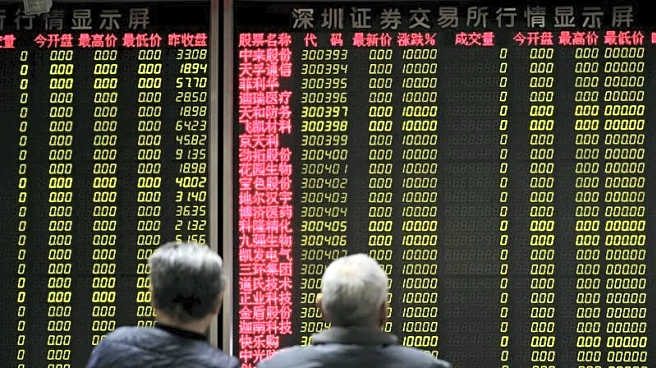What's Happening?
Gold prices have reached a record high of $4,381.21 per ounce, marking a significant increase of nearly 57% this year. This surge is attributed to heightened geopolitical risks, including U.S. sanctions against Russia and potential export controls on China.
The demand for gold as a safe-haven asset has been bolstered by these uncertainties, along with expectations of interest rate cuts and sustained central bank purchases. Spot gold rose by 0.5% to $4,114.06 per ounce, while U.S. gold futures for December delivery increased by 1.6% to $4,128.40 per ounce. Analysts suggest that gold could continue to rise, potentially reaching $4,700 per ounce if adverse macroeconomic and political developments persist.
Why It's Important?
The rise in gold prices reflects broader economic and geopolitical tensions that are influencing global markets. As a traditional safe-haven asset, gold's appeal increases during times of uncertainty, providing a hedge against inflation and currency fluctuations. The current geopolitical climate, including U.S. sanctions on Russia and trade tensions with China, has heightened investor anxiety, leading to increased demand for gold. This trend could impact various sectors, including mining and investment, as stakeholders adjust to the shifting economic landscape. Additionally, the potential for further interest rate cuts by the Federal Reserve could sustain the demand for non-yielding assets like gold.
What's Next?
Investors are closely monitoring upcoming economic indicators, such as the U.S. Consumer Price Index (CPI) report, which could influence the Federal Reserve's interest rate decisions. A 25-basis-point rate cut is anticipated at the Fed's next meeting, which could further support gold prices. Market participants will also be watching for any developments in U.S.-China trade relations and additional geopolitical events that could impact global economic stability.














